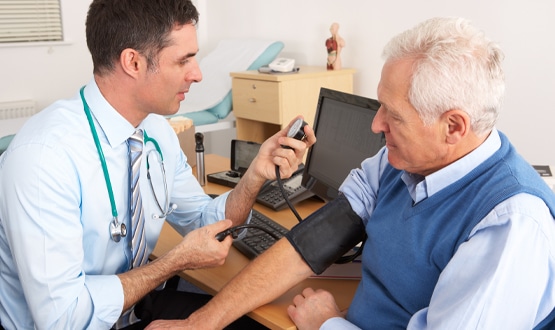Revolutionary road
- 20 November 2012

“I’d like to remind people this isn’t about a minority sport; this is about how we use most of the money in the NHS,” Stephen Johnson, deputy director and head of long term conditions at the Department of Health told the Telehealth 2012 conference.
Johnson is, of course, right that most of the NHS budget goes on dealing with long term conditions, and that some of that money might be saved if people could be kept out of expensive hospitals and dealt with in the community or their own homes.
But in the absence of real evidence that telehealth can deliver on its promises, the ‘telehealth revolution’ that the industry and government have promised feels as far off as ever.
Pilot season
This is not for a lack of telehealth pilots and trials. The biggest of these, the Whole System Demonstrator programme, was set up in May 2008 as the first randomised control trial of telealth and telecare.
More than 6,000 patients in three areas of England were involved in the bid to find out whether technology could make a difference to people living with long term conditions; and what changes to health and social care would need to be made to bring them about.
The study finished in September 2010, and in January this year the Department of Health issued a press release of ‘headline findings’. This said, in its entirety:
“The headline indications show that if used correctly telehealth can deliver a 15% reduction in A&E visits, a 20% reduction in emergency admissions, a 14% reduction in bed days and an 8% reduction in tariff costs. More strikingly, they also demonstrate a 45% reduction in mortality rates.”
A subsequent report from the Nuffield Trust was far more nuanced, noting that only marginally fewer intervention patients were admitted to hospital than control patients – and that the difference was largely accounted for by hospitalisations increasing in the control group.
Although the trust study did find that significantly fewer intervention patients died, an editorial in the British Medical Journal argued that the study did not support a full-scale telehealth roll-out.
Meanwhile, the number of patients using telehealth hasn’t grown very much; and remains stuck at around 5,000 across England. This despite the government using the WSD ‘headline findings’ to announce its five-year 3millionlives campaign, with a ‘concordat’ with industry to kick-start the sector.
On a budget
Chris Wright, programme manager at 3millionlives, acknowledged at Telehealth 2012 that the evidence for cost-savings remains thin.
“The key message with the WSD was that broadly speaking that telehealth was proven to work, but the problem was cost effectiveness,” he said.
Some telehealth vendors have been trying to shift the debate over the past year, arguing that since telehealth appears to be popular with patients, and to have a positive impact on their health, it should be adopted anyway.
Yet, with NHS budgets stretched wafer-thin, the cost issue is clearly affecting commissioners’ willingness to set-up and keep-on with projects.
Dr Shane Gordon, chief executive at North East Essex Clinical Commissioning Group, told the audience at the same conference that he desperately wanted to be convinced about telehealth, but he struggled to see the benefits.
“The evidence for cost effectiveness is too thin; it’s not convincing enough for me,” he said. “If it doesn’t resolve my financial challenges it won’t work.
“I need to see evidence that if I invest in telehealth, the investment will be worth it. We’ve used telehealth for three years; but it’s not effective enough so we’re dropping it this year.”
In Lanarkshire, a telehealth trial of chronic obstructive pulmonary disease patients, which involved the installation of 28 devices, found a 21% reduction in non-elective hospital admissions and a 25% reduction in hospital stays.
Yet, the trial was dropped a little over a year later. Sally Chisholm, chief executive of the NHS Technology Adoption Centre, said that over five years the cost of a telehealth patient to the system was about £19,000, while the cost of a non-telehealth patient was around £17,000. The health board decided not to continue with the service.
Banging the drum – but for what?
The 3millionlives campaign has been set up to reach the 3m people with long term conditions or social care needs that the DH believes could benefit from telehealth or telecare by 2017.
At an Age UK conference earlier this month, the new health secretary, Jeremy Hunt, “kickstarted” the initiative yet again by announcing that that seven “pathfinders” would be set up to enable 100,000 people to start using telehealth technology over the coming year.
Tenders for the work will be put together by the NHS Commissioning Board, with “leading technology companies supplying the NHS with the technologies and services at no upfront cost,” according to a DH press release.
Even so, when a representative from 3millionlives asked the audience another recent conference whether they thought the campaign could achieve its target, only a couple of hands moved tentatively into the air. The rest of the visitors to the International Telehealth and Telecare Conference kept their hands firmly in their laps.
Care minister Norman Lamb told the same event that he will be “banging the drum” for telehealth and telecare in the future, and expressed frustration that further reports from the WSD programme have still to be published.
Yet Nick Goodwin, senior fellow at the Kings Fund, said some fundamental issues still needed to be resolved. For instance, despite being an internationally acknowledged expert on telehealth, he said even he wasn’t sure how to define the word.
“Is it to manage conditions? To reduce burden of carers? Fill fewer hospital beds?” he mused at Telehealth 2012. “The other thing is what are you actually comparing it to? When people say that it’s better than usual care, what is that care?”
Deal or no deal
The underwhelming evidence base for telehealth is not the only problem that it faces. Wright identified a lack of clinical engagement as a problem. “Clinicians don’t know how to or don’t want to get involved,” he said.
And he acknowledged that existing procurement processes are poor: “We also need to have a flexible procurement process. It needs to be streamlined. Right now neither the industry nor the NHS is willing to buckle on the procurement process.
“Everyone thinks their circumstances are different, and instead of learning from each other, they want to try something completely new.”
Various speakers at both conferences suggested that the NHS, social care and industry would need to work in partnership to overcome this problem.
And Hunt’s November statement suggests the DH is looking to generate momentum by creating national or model tenders, and by getting industry to move from a ‘pay per box’ to a ‘pay for service’ model.
Dr Carl Henegan, director of the Centre for Evidence-Based Medicine at Oxford University, suggested this kind of change might even get over the WSD problem. He told yet another recent event that the trials cost the government £100m, but the technology was out of date by the time the results were released.
Revolutionary road
Meanwhile, the telehealth industry, perhaps unsurprisingly, continues to believe in the revolution.
Gill Baldwin, chief executive of Tunstall, said: “The reason why most of these practices prevail is because there are only 5,000 users in the country. When there are 3m, the story will be different.”




